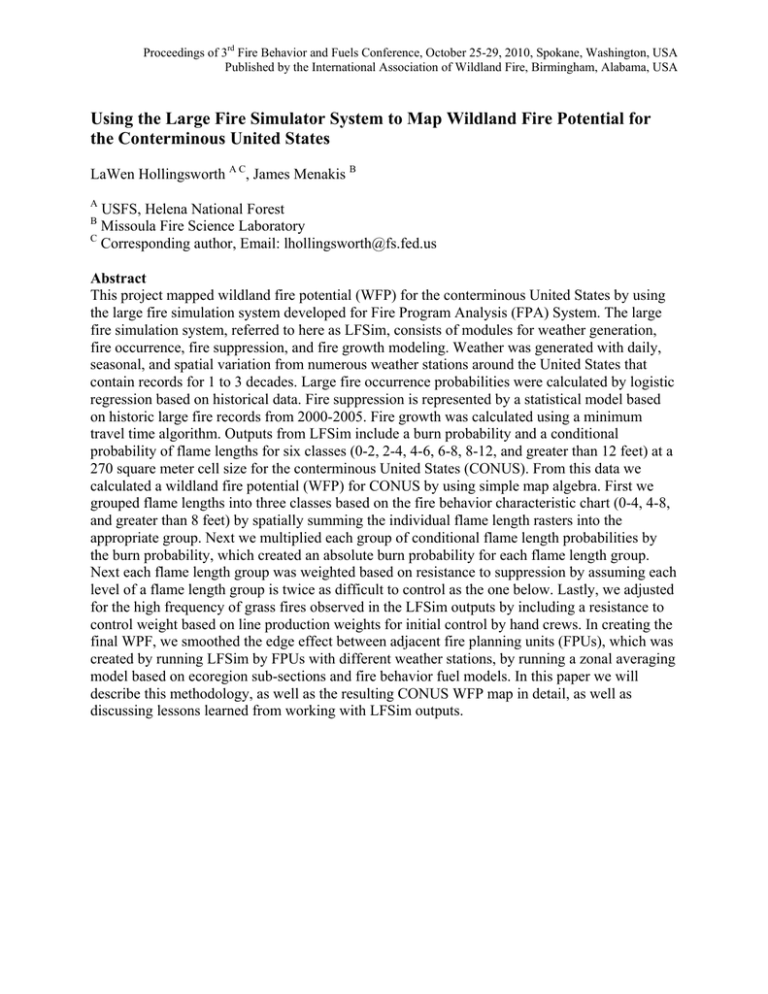Proceedings of 3
advertisement

Proceedings of 3rd Fire Behavior and Fuels Conference, October 25-29, 2010, Spokane, Washington, USA Published by the International Association of Wildland Fire, Birmingham, Alabama, USA Using the Large Fire Simulator System to Map Wildland Fire Potential for the Conterminous United States LaWen Hollingsworth A C, James Menakis B A USFS, Helena National Forest Missoula Fire Science Laboratory C Corresponding author, Email: lhollingsworth@fs.fed.us B Abstract This project mapped wildland fire potential (WFP) for the conterminous United States by using the large fire simulation system developed for Fire Program Analysis (FPA) System. The large fire simulation system, referred to here as LFSim, consists of modules for weather generation, fire occurrence, fire suppression, and fire growth modeling. Weather was generated with daily, seasonal, and spatial variation from numerous weather stations around the United States that contain records for 1 to 3 decades. Large fire occurrence probabilities were calculated by logistic regression based on historical data. Fire suppression is represented by a statistical model based on historic large fire records from 2000-2005. Fire growth was calculated using a minimum travel time algorithm. Outputs from LFSim include a burn probability and a conditional probability of flame lengths for six classes (0-2, 2-4, 4-6, 6-8, 8-12, and greater than 12 feet) at a 270 square meter cell size for the conterminous United States (CONUS). From this data we calculated a wildland fire potential (WFP) for CONUS by using simple map algebra. First we grouped flame lengths into three classes based on the fire behavior characteristic chart (0-4, 4-8, and greater than 8 feet) by spatially summing the individual flame length rasters into the appropriate group. Next we multiplied each group of conditional flame length probabilities by the burn probability, which created an absolute burn probability for each flame length group. Next each flame length group was weighted based on resistance to suppression by assuming each level of a flame length group is twice as difficult to control as the one below. Lastly, we adjusted for the high frequency of grass fires observed in the LFSim outputs by including a resistance to control weight based on line production weights for initial control by hand crews. In creating the final WPF, we smoothed the edge effect between adjacent fire planning units (FPUs), which was created by running LFSim by FPUs with different weather stations, by running a zonal averaging model based on ecoregion sub-sections and fire behavior fuel models. In this paper we will describe this methodology, as well as the resulting CONUS WFP map in detail, as well as discussing lessons learned from working with LFSim outputs.

